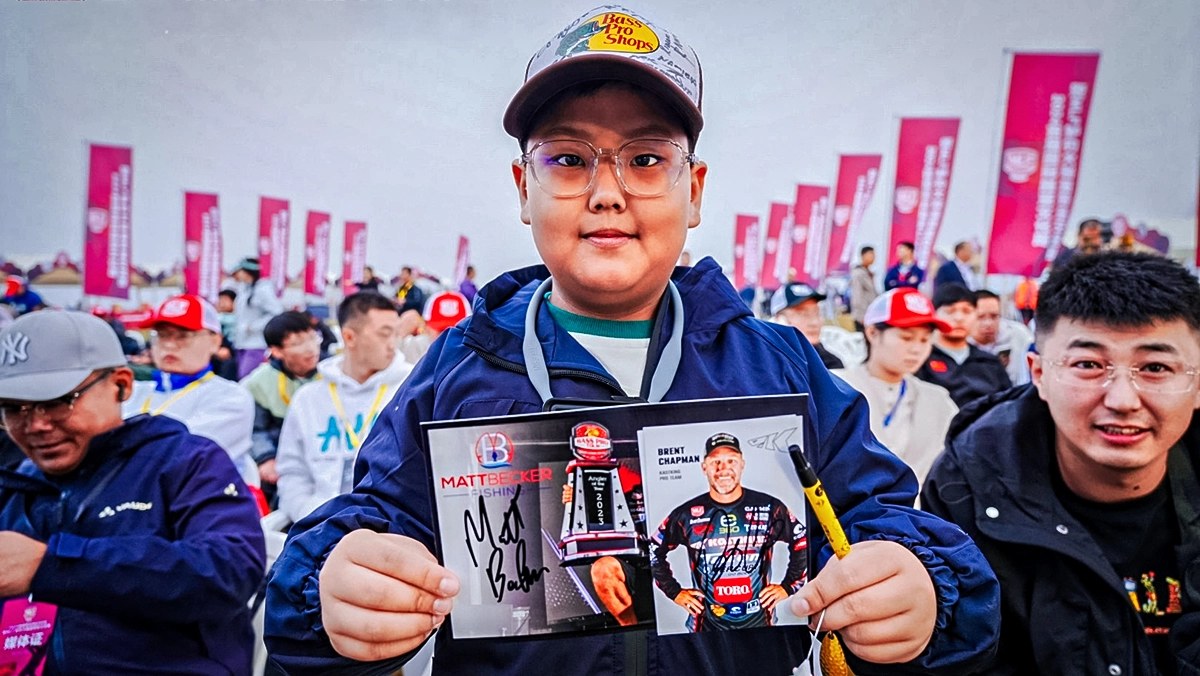When Matt Lee’s traveling the Bassmaster Elite Series, his plans roughly mirror those of the fish he seeks. Both spend much of their time on the major highways, they exit onto secondary roads when various needs arise and ultimately utilize local avenues for particular destinations. Just like terrestrial traffic, fish movement requires intersections. And fishing intersections can be the key to finding fish consistently.
Bass waters offer no stop lights, yield signs or roundabouts; but where one lane enters another, this creates opportunity. Feeding, migration routes, temperature variances and current dynamics all factor into the productivity of the point at which two routes intersect.
Whether it’s familiar waters or the unknowns, Lee trusts these crossings to guide his search.
“A lot of the places we go to, it’s my first time on the fishery, but you can tell a lot about a lake just by looking at a map even before you fish it,” he said. “I’m looking for where groups of fish come into and out of an area, and those intersections are good places to start.
“If I haven’t been to, say, Guntersville in a while, I’d typically start closer to the main lake and then work my way to the backs of the biggest bays and creeks. Somewhere, along the way, you’ll start to see signs of life.”
TYPES OF INTERSECTIONS
Big Stuff: Elite pro Ish Monroe points to where main river channels link to creeks and bays as the primary seasonal transition areas. This is where we find prespawn staging bass, post spawn bass nosing back toward deeper water and, of course, the late summer movement back toward the fall feeding grounds.
“Lake Guntersville is an easy example; you take any of the major creeks — South Sauty, North Sauty — and where they connect to the main river channel, it creates a big point,” Monroe said. “Usually, that’s a place where the current rips over a hard bottom spot where the fish will stage.”
Small Stuff: During a recent photo shoot, Elite stud Kevin VanDam stopped in front of a major creek arm, made a handful of tightly targeted casts and advised me to shadow his bait with mine. The spot was a modest little drain that dropped from a grass flat into the outer end of a creek channel—just the kind of place that collects bass.
Similarly, pro anglers know that the sneaky little notches and drains intersecting ledges funnel baitfish and offer travel lanes to and from adjacent flats.
Inflows: On big western reservoir lakes like Shasta and Oroville, Monroe looks for the many inflowing streams, each of which creates an intersection that’s particularly productive after significant rains. Intensifying currents attract bass that come to prey on the baitfish gathering around these nutrient-rich flows.
DEFINING FEATURES
VanDam first judges these travel routes by their degree of constriction. While a broad, even intersection allows fish to scatter, a tighter passage bunches them into a more target-rich scenario.
“It’s also a matter of what’s around an intersection and how it lays out,” VanDam said. “Sometimes, current can be a factor. I always look for ambush bottlenecks created by current, whether it’s power generation, a river itself or even wind-generated current like the gap between two islands.”
As Lee notes, stumps, rocks, logs, brush and laydowns flanking an intersection bolster the appeal. Similarly, Van Dam likes to see healthy grass in and around an intersection—a defining point noticeably different between southern lakes and those of upper latitudes.
“Grass changes everything because you can support so many more fish in a smaller area because that increase in habitat can keep fish using an area for longer periods of time,” he said. “On a northern natural clear lake, the bass have to roam more to find bait, so you’ll run into the same scenarios with intersections, but I think your windows are a lot smaller.”
FISH IT RIGHT
Monroe likes cranking these spots, but he’s partial to casting a 5/8- to 7/8-ounce River2Sea John Murray Papa Mur Jig with a Missile Baits Craw Father or Twin Turbo trailer. The colder months will see him using a slower, plodding presentation, but during the late-summer to early fall period, he’ll impart a faster, more aggressive technique.
VanDam generally bases his bait choice on grass/no grass. In open water situations, he likes jerkbaits and crankbaits; maybe even a topwater here and there. In shallower, weedy lakes, he’ll rely more on a weedless plastic jerkbait like the Strike King Caffeine Shad to work through the grass.
Lee attacks a grassy intersection with a Strike King Rage Swimmer or a Strike King Pure Poison vibrating jig. Where submerged or emergent wood and rocks complement the intersection, he’s fond of banging a Strike King KVD 1.5 square bill through the cover. Frogging and pitching Texas-rigged plastics will also produce.
In those deeper northern lakes, being able to quickly reach the intersection and effectively probe large deep areas for less-concentrated fish is VanDam’s top consideration.
“A drop shot with the new Strike King KVD Half Shell is really the go-to because of efficiency,” he said. “You can put up to a 1/2-ounce weight and get it down to that zone and cover water pretty quickly.”
Whatever you throw, Lee said seasonal movements generally make any intersection pattern you discover replicable throughout much of the lake.
“I think the more cover that a place has, that means it’s a little more fertile,” Lee said. “Every bite tells you something and multiple bites in an intersection clue you in to what the fish are doing across the whole body of water.”












